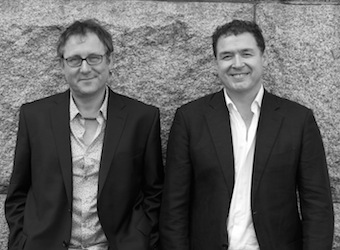A blueprint for building new habits
Share

In the second part of a three-part series, Crawford Hollingworth and Mike Daniels from The Behavioural Architects examine how we can create and introduce new habits and behaviours. (And if you haven’t, check out Part One: Changing sticky habits and making the subconscious conscious.)
We are creatures of habit. Some of our habits are so deeply ingrained we can even be slaves to them, so making changes to our behaviour is harder than we think. Trying to get people to change habits is one thing however trying to initiate a new behaviour is something else entirely.
We know that changing attitudes and people’s intentions to change behaviour is possible, however actual behaviour change is much more elusive.
The last decade has delivered a number of breakthroughs in our understanding of habits with more research providing greater insights into how behaviour is influenced and shaped.
Step 1 – Choose a new habit or behavioural goal and focus on it
For marketers decide on the particular behaviour change you want to instil in others.
We all know it’s easy to do something differently for the first time, but it’s hard to maintain that behaviour change long term, so its important to consider the neurological loop at the base of a habit.
Habits are built through context-dependent repetition, so identifing the triggers and rewards will help to build repetition and create a habit loop by developing automaticity.
As behavioural experts Bas Verplanken and Henrik Aarts state, habits are, “learned sequences of acts that have become automatic responses to specific cues, and are functional in obtaining certain goals or end states.”
Step 2 – Identify the behavioural cue or trigger, which will drive your new habit
Habits are triggered by context and circumstances, so understanding the possible existing contextual triggers, which prompt us to do certain things is very useful.
There are five primary context types for triggers:
- Location,
- time,
- other people,
- emotional state, and
- the immediately preceding action.
Connecting new behaviours to existing behaviours, or ‘piggybacking’, is a strategic approach to help form new habits.
For example, P&G air freshener Febreze, was successfully marketed to consumers as the reward at the end of a cleaning routine so it became a habit which was initially piggybacked onto the end of a cleaning routine and gradually became the inextricable reward part of the routine itself.
Suntory, the Japanese whisky group, started to serve the humble whisky-soda in pint glasses, in order to piggyback the drinking experience onto well-established beer drinking behaviours. This ‘highball’ has helped sales of whisky in Japan to rise by 10% a year over the past three years.
Piggybacking on existing habits and behaviours can make establishing new habits a much easier process.
Step 3 – The power of tangible, subconscious and biological rewards in building a habit loop
In almost all habitual behaviours it is the reward element that gives the habit its addictive appeal. So it makes sense to establish the reward structure for the habit we wish to build.
Creating an incentive or reward will help to motivate and encourage us to carry out a particular behaviour, and most crucially it will help to reinforce the routine and eventually make the behaviour automatic.
The type of reward can be tangible eg: a treat after a workout, or more subconscious, such as a self-esteem boost or even psychological with the release of the brain’s feel-good chemical dopamine.
Behavioural strategies to promote repetition
There are a number of additional strategies, which can help to build repetition and strengthen the automaticity of a habit.
Commit to a plan: new habits don’t just happen. We need consciously to work out how to build them into our lives. One technique is to make an exact plan, as the process of planning things creates commitment bias, where we are more likely to carry out a task if we commit to it, especially publicly.
Make a small change or addition to a stable context: we are creatures of habit, who automatically seek out routine. In fact researchers have demonstrated that as much as 45% of our daily actions are habitual. A useful approach to creating new habits is to build them within your existing stable context so that behavioural patterns will more easily establish themselves, because the same triggers are there every time – every day, every week.
Take advantage of major permanent disruptions: a major life change – such as moving house or changing jobs – provides a great opportunity to create new habits as it disrupts existing routines and provides a space for new habits. Research has found that 36% of successful behaviour change accounts involved moving to a new location, while 13% also involved altering the immediate environment.
Practice makes habit: it takes time to build a new habit, embed it in our routines and make it automatic. No new behaviour is going to become part of your life overnight. Research has found that it can take between 18 days and 8 months to cement a new habit. The accepted average is around two months.
See Part Three next week where we discuss how you can measure and understand habits. (Or go back to Part One.)















